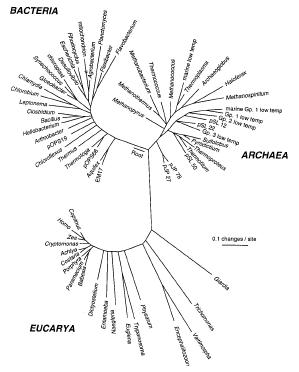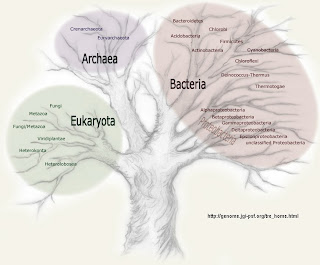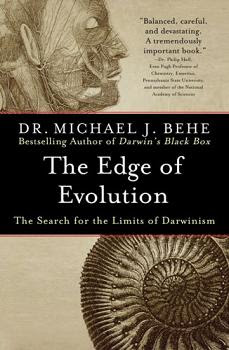 Monday's Molecule #16 is 1,1,1-trichloro-2,2 bis(p-chlorophenyl) ethane, better known as DDT. DDT is a powerful insecticide. It binds to the voltage-gated sodium channel and locks it in the open state. Prolonged influx of sodium ions causes the nerves to fire repeatedly and this causes death of the insect.
Monday's Molecule #16 is 1,1,1-trichloro-2,2 bis(p-chlorophenyl) ethane, better known as DDT. DDT is a powerful insecticide. It binds to the voltage-gated sodium channel and locks it in the open state. Prolonged influx of sodium ions causes the nerves to fire repeatedly and this causes death of the insect.The reason DDT is so powerful is due to its specificity. It binds to insect channel proteins but not to those of other animals (or plants, fungi, protists, and bacteria). Thus, it is an effective insecticide used to fight malaria and other insect borne diseases.
 Unfortunately, even though DDT is not immediatly toxic to other animals it does have one disadvantage: it is extremely stable—its biological half-life is about eight years. Furthermore, DDT is stored in fatty tissues and its buildup in birds and fish resulted in considerable loss of these species. That, coupled with the evolution of DDT resistant insects, led to a ban of DDT in most countries by the 1970's.
Unfortunately, even though DDT is not immediatly toxic to other animals it does have one disadvantage: it is extremely stable—its biological half-life is about eight years. Furthermore, DDT is stored in fatty tissues and its buildup in birds and fish resulted in considerable loss of these species. That, coupled with the evolution of DDT resistant insects, led to a ban of DDT in most countries by the 1970's. Rachel Carson is largely credited with launching the environmental movement in 1962 with the publication of Silent Spring. The title refers to a world without birds. While I was writing this up I did a quick survey of the graduate students in the nearby labs and none of them had ever heard of Rachel Carson. Not only that, neither had several of my colleagues. I feel old.
Rachel Carson is largely credited with launching the environmental movement in 1962 with the publication of Silent Spring. The title refers to a world without birds. While I was writing this up I did a quick survey of the graduate students in the nearby labs and none of them had ever heard of Rachel Carson. Not only that, neither had several of my colleagues. I feel old.One of the main targets of Silent Spring was DDT. By the time the book was published it was estimated that DDT had saved the lives of millions of people through prevention of malaria and thyphoid but it's effectiveness was much diminished. That's why the ban was not as controversial as it might have been.
Let's look at the biochemistry of DDT. We have already learned about the simple voltage-gated potassium channel. The Na+ (sodium) channel is closely related to the K+ channel protein. Recall that the K+ channel consists of four identical subunits surrounding a central hole through which K+ ions enter the cell.
The Na+ channel protein is much larger than the K+ channel subunit because it consists of four of the smaller subunits fused into a single polypeptide chain. The tolopology of the Na+ channel protein is shown below.
 Each of the domains (I-IV) corresponds to a single subunit of the K+ channel. Like the K+ channel, the four domains of the Na+ channel protein are arranged around a central tunnel through which sodium ions enter the cell. The S5 and S6 helices line the tunnel.
Each of the domains (I-IV) corresponds to a single subunit of the K+ channel. Like the K+ channel, the four domains of the Na+ channel protein are arranged around a central tunnel through which sodium ions enter the cell. The S5 and S6 helices line the tunnel.The toplogy diagram above shows the locations of mutations conferring resistance to DDT and similar drugs. Each one represents mutants identified in resistant houseflies, fruit flies, mosquitos, or moths. The important mutations are substitutions at the 932 position normally occupied by leucine (L932) and at the 929 position normally occupied by threonine (T929) (blue dots). For example, the substition of isoleucine for threonine at 929 (T929I) confers almost complete resistance to DDT.
Incidently, the methionine at 918 (M918) is what confers sensitivity to DDT in the insect voltage-gated Na+ channel. Other animlas have a different amino acid at this position and they are not sensitive to DDT.
O'Reilly et al. (2006) modeled the structure of the Na+ channel using the known structures of the K+ channel proteins. This is necessary because the Na+ channel has not been crystallized. It's an excellent way to get a structure when you know that two proteins are homologous (descended from a common ancestor).
From the model, the authors were able to focus on the probable site of DDT binding based on the known mutations to resistance. In this case, they looked at the interface between helix S5 in Domain II and nearby helices S6 from Domain II (IIS6) and S6 from Domain III (IIIS6), which packs against IIS5 in the structure. They tried docking various insecticides in this region and came up with a good fit in all cases. The DDT binding site is shown below.
 Note that the side chains of T929 and L932 interact directly with DDT. These are the sites of mutations to high levels of resistance. It looks like changes to these amino acids prevent binding of DDT and that's the basis of resistance.
Note that the side chains of T929 and L932 interact directly with DDT. These are the sites of mutations to high levels of resistance. It looks like changes to these amino acids prevent binding of DDT and that's the basis of resistance.The S4-S5 linker helix is shown in yellow in this figure. Recall that this is the helix that responds to membrane potential by reorienting to a more vertical position. This, in turn, shifts the S5 and S6 helices to more vertical postions and closes the channel. In the presence of DDT the S5 and S6 helices are effectively cross-linked and they cannot shift to a position where they move closer together. This prevents closing of the channel. DDT locks the channel in the open conformation leading to a continual influx of Na+, uncontrolled firing of the nerve, and eventual death.
O'Reilly, Andrias O., Khambay, Bhupinder P. S., Williamson, Martin S., Field, Linda M., Wallace, B. A., and Davies, T. G. Emyr (2006) Modelling insecticide-binding sites in the voltage-gated sodium channel. Biochem. J. (2006) 396:255–263.





















